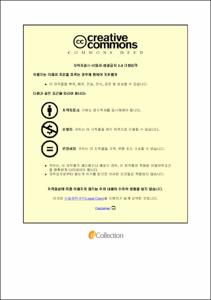터보 차저 주조품의 결함 최소화를 위한 CAE 해석 설계
- Alternative Title
- Design of Turbo charger casting part for defect minimization using the CAE analysis
- Abstract
- Under the ongoing global warming, regulations for gas emissions in the automobile industry are increasingly tightened. In order to deal with such automotive industry regulations, researches are being carried out to increase fuel and energy efficiency. One of those measures for improving fuel efficiency, turbo charger of the air supercharging system is being developed. Among the components of the turbocharger system, turbo charger housing has a high thermal resistance and a complicated hollow shape. For manufacturing this complex product shapes, shell casting method is used, which is one of the precision casting methods. While shell casting can contribute to mass production, the production cost of it is high because of the metal mold.
CAEanalysis is applied in the design stage to reduce the trial and error in the casting process and minimize product defect. This process can help identify the problems at the design stage and predict the defects by checking the flow, solidification, deformation and stress of the casting molten metal. The results of the CAE analysis is applied to product design optimization and quality improvement.
In this study, the turbocharger housings used in gasoline automobiles were examined and the results of filling and solidification were confirmed and studied by casting molding analysis program. After processing the analysis applying the first design, the test results were confirmed and the castings were fabricated by reflecting these results. Secondary casting design and analysis with the modifications of the product location were carried out. This is for comparing the results of the first analysis with the defects of the first casting and for minimizing the occurrence of the porosity defects. In addition, the shrinkage failure was improved by applying the chill to the expected localized contraction range and there was no pore and shrinkage defect in the secondary casting after reflecting the analysis results.
As a result of this study, there was similar tendency between the test results using the casting simulations and the defects porosity of the fabricated castings. After comparing the dimensions of primary and secondary casting using 3D measurement equipment, it was confirmed that the dimensional deviation of secondary castings with low porosity and shrinkage defects was low.
- Issued Date
- 2017
- Awarded Date
- 2017. 8
- Type
- Dissertation
- Publisher
- 부경대학교
- Alternative Author(s)
- Gwak Hee-Young
- Affiliation
- 부경대학교 산업대학원
- Department
- 산업대학원 기계공학과
- Advisor
- 강대민
- Table Of Contents
- 제 1 장 서 론 1
1.1 연구의 배경 및 동향 1
1.2 연구의 목적 3
제 2 장 이론적 배경 5
2.1 쉘 주조법 5
2.2 유한요소해석 8
제 3 장 유한요소해석 방법 11
3.1 모델링 구성 11
3.2 주조해석조건 14
제 4 장 해석 결과 및 고찰 17
4.1 1차 해석결과 및 고찰 17
4.1.1 충전 양상 결과 17
4.1.2 응고 양상 결과 21
4.2 2차 해석결과 및 고찰 25
4.2.1 충전 양상 결과 26
4.2.2 응고 양상 결과 29
4.3 냉금 적용에 따른 응고 양상 결과 및 고찰 32
제 5 장 해석결과를 적용한 주조품 제작 및 측정 34
5.1 주조품 제작조건 및 결함 확인 34
5.2 3차원 치수 측정 평가 39
제 6 장 결 론 45
References 46
Abstract 48
- Degree
- Master
- Files in This Item:
-
-
Download
 터보 차저 주조품의 결함 최소화를 위한 CAE 해석 설계.pdf
기타 데이터 / 1.93 MB / Adobe PDF
터보 차저 주조품의 결함 최소화를 위한 CAE 해석 설계.pdf
기타 데이터 / 1.93 MB / Adobe PDF
-
Items in Repository are protected by copyright, with all rights reserved, unless otherwise indicated.